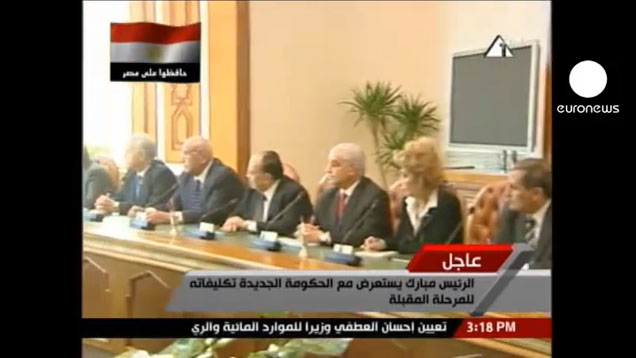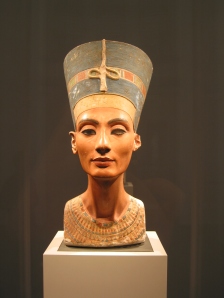 Traditional heritage professionals are fond of expressing disdain for the Walt Disney Corporation, convinced that they and only they are the appropriate stewards of heritage. They despise the idea of heritage “theme parks,” and cherish the ideal of preserving something they call “authenticity.” The reality is rather less clear-cut. Heritage, in particular World Heritage sites, are becoming ever more like theme parks, especially when their contemporary function is “economic development.” Indeed the theme of the upcoming 2011 ICOMOS general assembly in Paris, hosted by ICOMOS France, is “Heritage: Driver of Development.” The development being of course primarily economic in this stubbornly neo-liberal, Sarkozyist time.
Traditional heritage professionals are fond of expressing disdain for the Walt Disney Corporation, convinced that they and only they are the appropriate stewards of heritage. They despise the idea of heritage “theme parks,” and cherish the ideal of preserving something they call “authenticity.” The reality is rather less clear-cut. Heritage, in particular World Heritage sites, are becoming ever more like theme parks, especially when their contemporary function is “economic development.” Indeed the theme of the upcoming 2011 ICOMOS general assembly in Paris, hosted by ICOMOS France, is “Heritage: Driver of Development.” The development being of course primarily economic in this stubbornly neo-liberal, Sarkozyist time.
It is enlightening in that respect that one of the main themes (indeed the only one dealing with the actual CONTENT (as opposed to material forms) of heritage is entitled “Development as Tourism.”
The call for abstracts reads:
“Heritage is a major part of the tourist industry, but at the same time, because of the mass consumption to which it is increasingly subject, it runs the risk of becoming meaningless, by fluctuating between preservation of museum pieces and theme-park caricatures. Cut off from its context, the real significance of heritage risks being drowned out by a feeble reflection, and its very nature is altered by excessive numbers of visitors and the facilities installed for them.”
We must move towards the development of “sustainable tourism” which will protect and reveal the values of the heritage. Several courses of action are available, among other:
– Controlling visitor flow, so as both to limit physical erosion and to ensure the comfort of visitors and provide the best conditions for them to understand and appreciate the value of heritage. Some preliminary reports on trials successfully undertaken at a number of buildings and ‘Grands Sites’ [designated French cultural landscapes] may help in developing guidelines.
– But also, and above all, by means of an effective cultural programme, make the richness of the heritage and the spirit of the place perceptible, in both its tangible and intangible dimensions, by fully revealing and interpreting its elements and wider context, and by encouraging public awareness of history through education and the wider media.
– Fully re-integrate tourism activity within the local socio-economic context, and bringing the values of cultural identity to the fore.
Now I’m not exactly sure what the third of those recommendations means, but the first two are clear. The key to “sustainable tourism,” which is presumably seen as more or less the only public outlet for “heritage” has been boiled down to a matter of crowd control and increasingly satisfying “visitor experiences.”
There is no question that heritage sites, especially the most highly visited are being rapidly trivialized and physically destroyed but the ever-growing crush of visitors. The Valley of the Kings in Egypt is only one horrible example of how nations have chosen to see heritage as a readily strip-mineable resource.

Tourists queuing to enter the Tomb of King Tutankhamun, Valley of the Kings
How ironic that this turn to seeing heritage as exclusively a matter of tourism (and benign neglect of other uses for the past for collective memory, community activities, and local identity formulation and reformulation) must undoubtedly force the traditional heritage authorities– now the self-appointed drivers and planners of profitable heritage tourism– to look to the proven source of skills at the place they most despise:
From the New York Times December 28, 2010:
By Brooks Barnes
ORLANDO, Fla. — Deep in the bowels of Walt Disney World, inside an underground bunker called the Disney Operational Command Center, technicians know that you are standing in line and that you are most likely annoyed about it. Their clandestine mission: to get you to the fun faster.

Visitors wait in line at the Space Mountain attraction at Walt Disney World in Orlando, Fla. Disney has installed game stations along the way to entertain visitors while they wait. Photo: Joe Burbank/Orlando Sentinel
To handle over 30 million annual visitors — many of them during this busiest time of year for the megaresort — Disney World long ago turned the art of crowd control into a science. But the putative Happiest Place on Earth has decided it must figure out how to quicken the pace even more. A cultural shift toward impatience — fed by video games and smartphones — is demanding it, park managers say. To stay relevant to the entertain-me-right-this-second generation, Disney must evolve.
And so it has spent the last year outfitting an underground, nerve center to address that most low-tech of problems, the wait. Located under Cinderella Castle, the new center uses video cameras, computer programs, digital park maps and other whiz-bang tools to spot gridlock before it forms and deploy countermeasures in real time.
In one corner, employees watch flat-screen televisions that depict various attractions in green, yellow and red outlines, with the colors representing wait-time gradations.
If Pirates of the Caribbean, the ride that sends people on a spirited voyage through the Spanish Main, suddenly blinks from green to yellow, the center might respond by alerting managers to launch more boats.
[…]
Disney, which is periodically criticized for overreaching in the name of cultural dominance (and profits), does not see any of this monitoring as the slightest bit invasive. Rather, the company regards it as just another part of its efforts to pull every possible lever in the name of a better guest experience.
The primary goal of the command center, as stated by Disney, is to make guests happier — because to increase revenue in its $10.7 billion theme park business, which includes resorts in Paris and Hong Kong, Disney needs its current customers to return more often. “Giving our guests faster and better access to the fun,” said Thomas O. Staggs, chairman of Walt Disney Parks and Resorts, “is at the heart of our investment in technology.”
Disney also wants to raise per-capita spending. “If we can also increase the average number of shop or restaurant visits, that’s a huge win for us,” Mr. Holmes said.
Disney has long been a leader in technological innovation, whether that means inventing cameras to make animated films or creating the audio animatronic robots for the attraction It’s a Small World.
Behind-the-scenes systems — typically kept top secret by the company as it strives to create an environment where things happen as if by magic — are also highly computerized. Ride capacity is determined in part by analyzing hotel reservations, flight bookings and historic attendance data. Satellites provide minute-by-minute weather analysis. A system called FastPass allows people to skip lines for popular rides like the Jungle Cruise.
But the command center reflects how Disney is deepening its reliance on technology as it thinks about adapting decades-old parks, which are primarily built around nostalgia for an America gone by, for 21st century expectations. “It’s not about us needing to keep pace with technological change,” Mr. Staggs said. “We need to set the pace for that kind of change.”
For instance, Disney has been experimenting with smartphones to help guide people more efficiently. Mobile Magic, a $1.99 app, allows visitors to type in “Sleeping Beauty” and receive directions to where that princess (or at least a costumed stand-in) is signing autographs. In the future, typing in “hamburger” might reveal the nearest restaurant with the shortest wait…
For full article, chick here.
* * *
Development as Tourism indeed! In “official,” “development-oriented” Heritage, Disney leads the way! Again!
There just has to be a different way to deal with the past…















